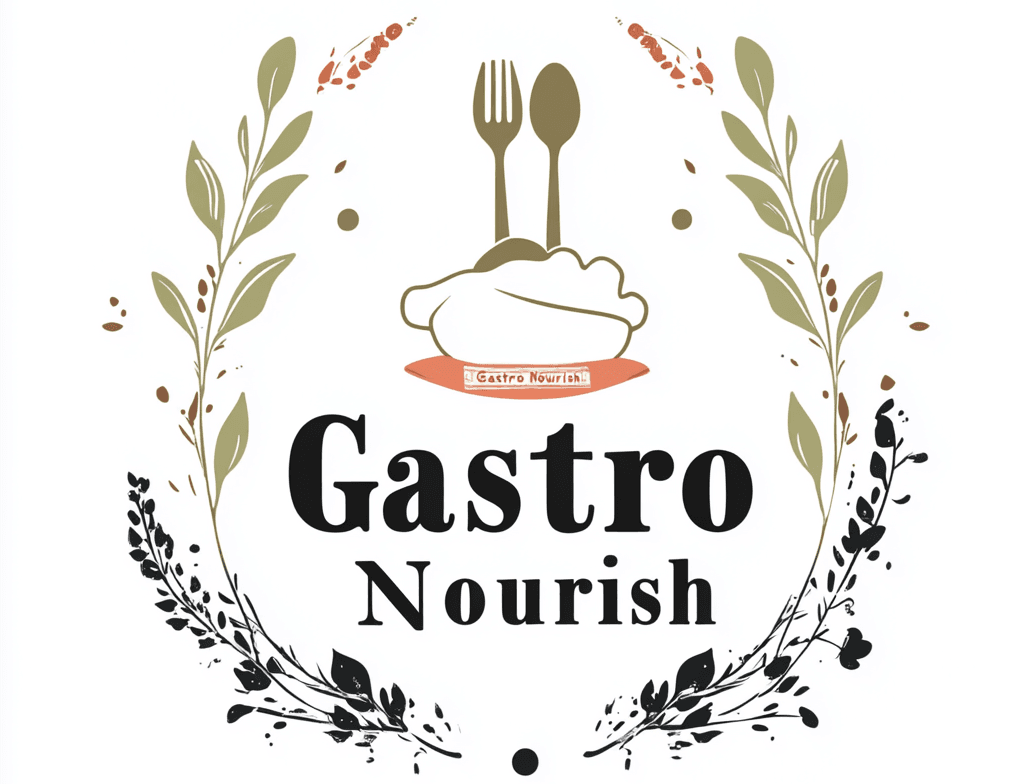Introduction to Napa Cabbage Recipes
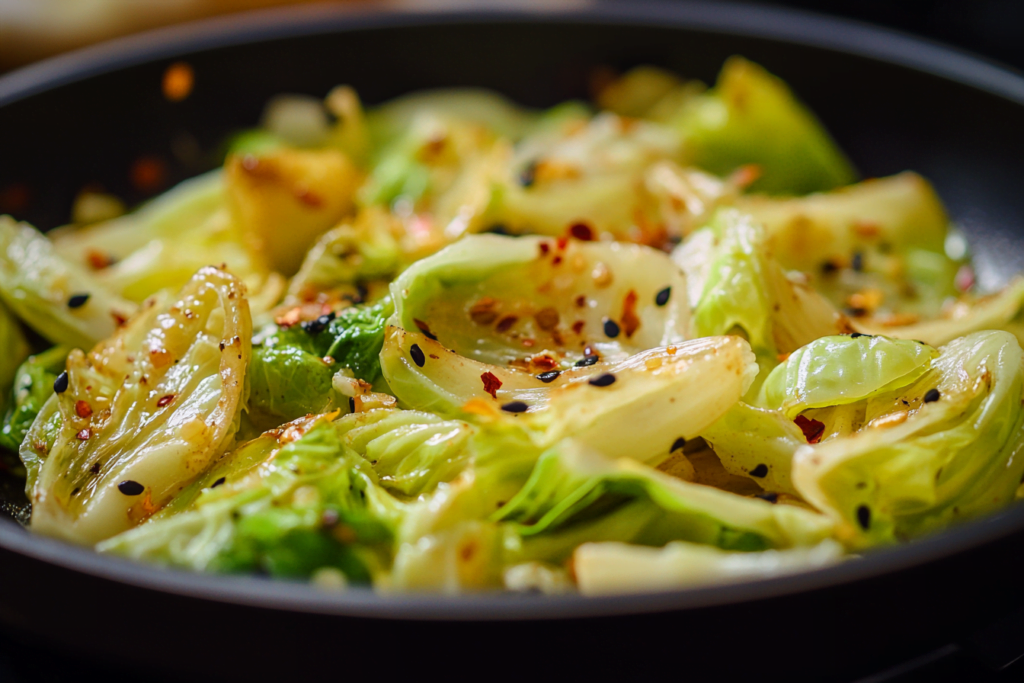
What is Napa Cabbage?
Napa cabbage, also known as Chinese cabbage recipes, is a leafy green vegetable that belongs to the Brassica family. It’s characterized by its long, oblong shape and pale green leaves with white stalks. Originating from East Asia, napa cabbage is a staple in many Asian cuisines, prized for its mild flavor and crunchy texture.
This versatile vegetable is not only delicious but also packed with nutrients. It’s low in calories and high in vitamins C and K, making it a healthy addition to any diet. Napa cabbage is also rich in antioxidants, which can help protect your body from free radicals and support overall health.
Nutritional Benefits of Napa Cabbage
When it comes to nutrition, napa cabbage is a powerhouse. It’s an excellent source of vitamin C, which is essential for a healthy immune system and skin health. Additionally, vitamin K in napa cabbage plays a crucial role in blood clotting and bone health. The vegetable is also a good source of folate, which is important for cell division and DNA synthesis.
Moreover, napa cabbage contains antioxidants like beta-carotene and lutein, which can help reduce inflammation and lower the risk of chronic diseases. Its high water content makes it hydrating and refreshing, perfect for light and healthy meals.
Incorporating napa cabbage into your diet can provide numerous health benefits, from boosting your immune system to supporting bone health. Whether you’re looking to add more greens to your meals or explore new flavors, napa cabbage is a fantastic choice.
In this section, we’ve introduced napa cabbage and highlighted its nutritional benefits. In Part 2, we’ll explore a variety of delicious napa cabbage recipes, from traditional dishes to creative new ideas. Stay tuned for some mouthwatering inspiration!
Delicious Napa Cabbage Recipes
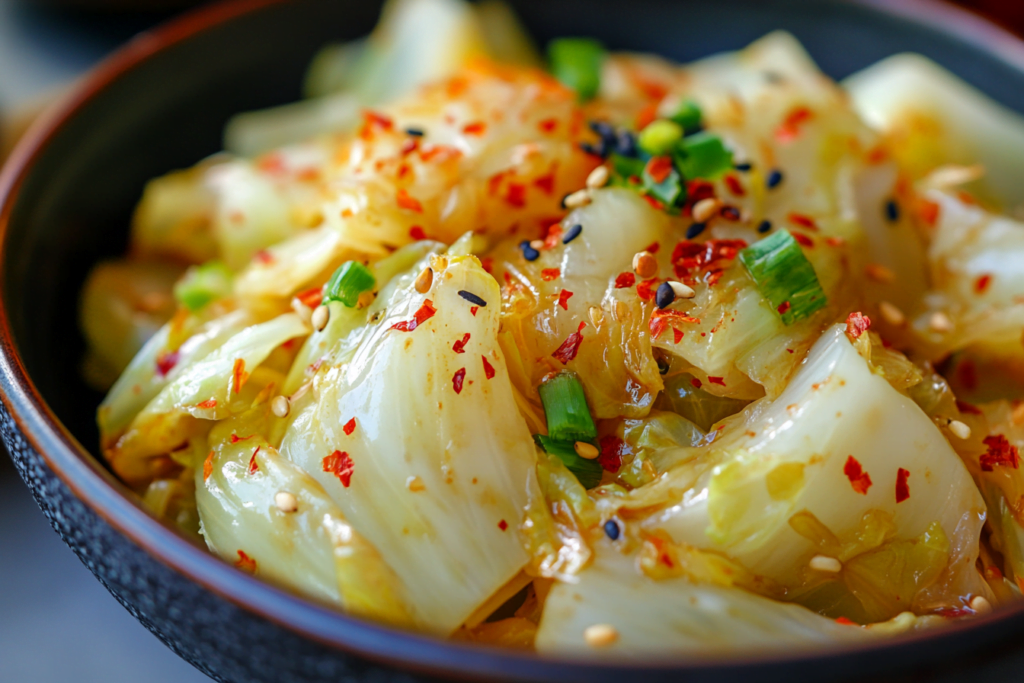
Classic Napa Cabbage Kimchi
One of the most iconic ways to enjoy napa cabbage is by making kimchi, a traditional Korean dish that’s both tangy and spicy. Kimchi is a fermented side dish made with napa cabbage, radishes, and a blend of seasonings like garlic, ginger, and Korean red pepper flakes (gochugaru). The fermentation process not only enhances the flavor but also boosts the probiotic content, promoting gut health.
To make kimchi, start by cutting the napa cabbage into quarters and soaking it in a saltwater brine. This step helps soften the cabbage and draw out excess moisture. After a few hours, rinse the cabbage and mix it with the seasoning paste. Pack the mixture tightly into jars and let it ferment at room temperature for a few days. The result is a flavorful, tangy kimchi that can be enjoyed as a side dish or added to soups and stews.
Napa Cabbage Stir-Fry with Tofu
For a quick and healthy meal, try a napa cabbage stir-fry with tofu. This dish is perfect for busy weeknights when you need something nutritious and satisfying. The mild flavor of napa cabbage pairs beautifully with the savory taste of tofu, creating a harmonious blend of textures and flavors.
To prepare this stir-fry, start by slicing the napa cabbage and pressing the tofu to remove excess moisture. In a hot pan, sauté garlic and ginger until fragrant, then add the tofu and cook until golden brown. Toss in the napa cabbage and stir-fry until it’s tender yet still crisp. Season with soy sauce, sesame oil, and a sprinkle of sesame seeds for added flavor. Serve it over steamed rice or noodles for a complete meal.
Napa Cabbage Salad with Sesame Dressing
If you’re in the mood for something light and refreshing, a napa cabbage salad with sesame dressing is a fantastic choice. This salad is crisp, crunchy, and full of flavor, making it a perfect side dish or a light lunch.
To make the salad, thinly slice the napa cabbage and toss it with shredded carrots, sliced cucumbers, and chopped green onions. For the dressing, whisk together sesame oil, rice vinegar, soy sauce, honey, and a touch of ginger. Drizzle the dressing over the salad and toss to combine. Top with toasted sesame seeds and chopped peanuts for extra crunch.
In this section, we’ve explored a variety of delicious napa cabbage recipes, from traditional kimchi to a refreshing salad. In Part 3, we’ll dive into more creative ways to use napa cabbage in your cooking, offering inspiration for every meal.
Creative Ways to Use Napa Cabbage
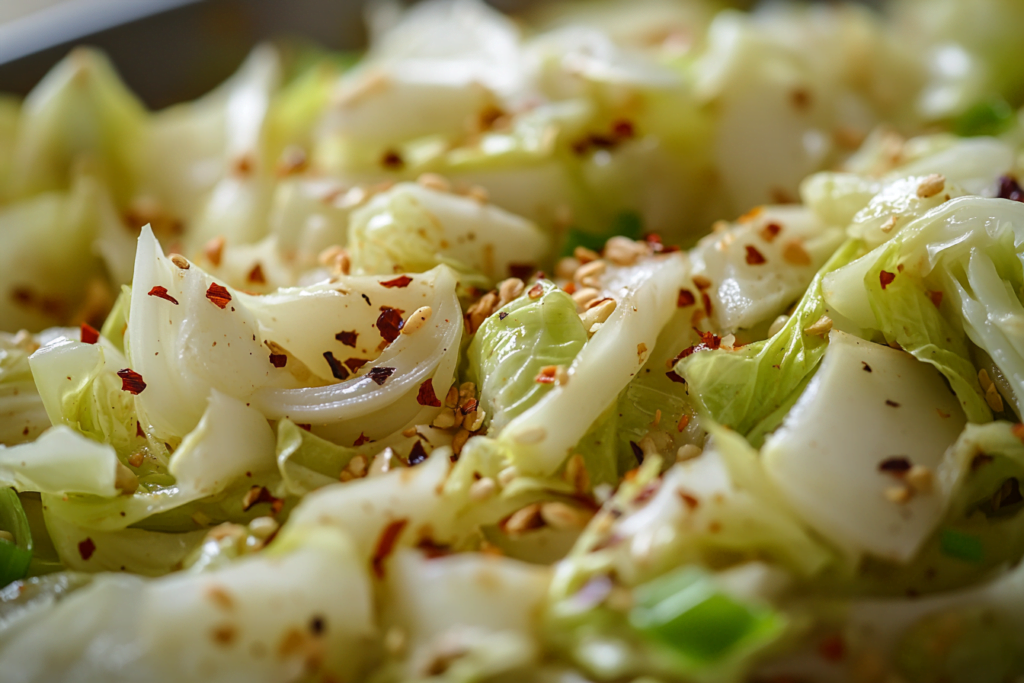
Napa Cabbage Wraps with Ground Turkey
Looking for a low-carb alternative to traditional wraps? Napa cabbage leaves make excellent wraps for a variety of fillings. One delicious option is to use ground turkey, which pairs perfectly with the mild flavor of napa cabbage. These wraps are not only healthy but also incredibly satisfying.
To prepare, start by cooking ground turkey with garlic, onion, and your favorite spices. You can add a splash of soy sauce and a dash of chili flakes for extra flavor. Once the turkey is cooked through, spoon it into individual napa cabbage leaves. Top with sliced bell peppers, shredded carrots, and a sprinkle of fresh cilantro. Roll up the leaves and secure them with a toothpick if needed. These wraps are perfect for a light lunch or a fun appetizer.
Napa Cabbage and Mushroom Soup
For a comforting and nourishing meal, try making a napa cabbage and mushroom soup. This soup is hearty, flavorful, and packed with nutrients, making it a great choice for chilly days.
Begin by sautéing onions and garlic in a pot until they become translucent. Add sliced mushrooms and cook until they release their juices. Stir in chopped napa cabbage and pour in vegetable or chicken broth. Let the soup simmer until the cabbage is tender. Season with soy sauce, a splash of rice vinegar, and a pinch of white pepper. For added depth, you can include tofu or shredded chicken. Serve hot, garnished with green onions and a drizzle of sesame oil.
Grilled Napa Cabbage Steaks
For a unique twist on grilling, try making napa cabbage steaks. Grilling brings out the natural sweetness of the cabbage and adds a delightful smoky flavor.
To make these steaks, cut the napa cabbage into thick slices, keeping the core intact to hold the leaves together. Brush each slice with olive oil and season with salt, pepper, and a sprinkle of smoked paprika. Grill the cabbage steaks over medium heat until they are charred and tender, about 5 minutes per side. Serve them as a side dish or top with a tangy vinaigrette and crumbled feta cheese for a delicious main course.
In this section, we’ve explored creative ways to use napa cabbage, from wraps to grilled steaks. In Part 4, we’ll discuss how to incorporate napa cabbage into various cuisines, showcasing its versatility and global appeal.
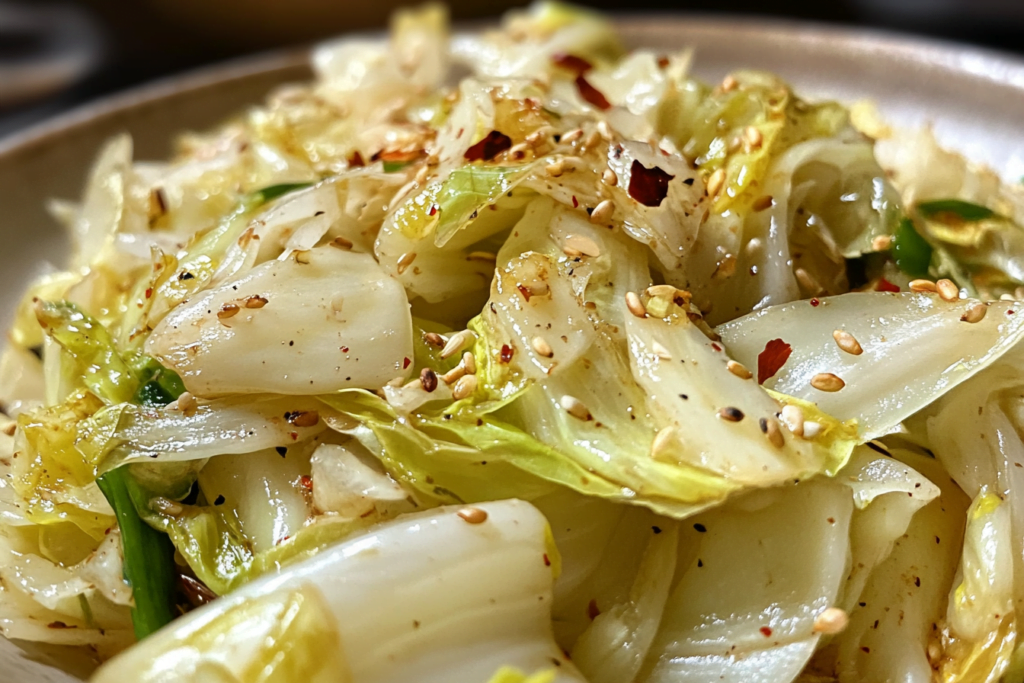
Incorporating Napa Cabbage into Global Cuisines
Asian-Inspired Napa Cabbage Slaw
Napa cabbage is a staple in many Asian dishes, and one of the simplest ways to enjoy it is in a refreshing slaw. This Asian-inspired slaw is crisp, tangy, and perfect as a side dish or a topping for sandwiches and tacos.
To make the slaw, thinly slice napa cabbage and combine it with julienned carrots, sliced bell peppers, and chopped cilantro. For the dressing, mix together rice vinegar, soy sauce, sesame oil, honey, and a touch of sriracha for heat. Toss the vegetables with the dressing and let it sit for a few minutes to allow the flavors to meld. Top with toasted sesame seeds and crushed peanuts for added texture.
Italian-Style Stuffed Napa Cabbage Rolls
For an Italian twist, try making stuffed napa cabbage rolls. These rolls are filled with a savory mixture of ground beef, rice, and herbs, then baked in a rich tomato sauce.
Begin by blanching the napa cabbage leaves in boiling water until they are pliable. In a bowl, mix cooked rice, ground beef, minced garlic, chopped parsley, and grated Parmesan cheese. Season with salt, pepper, and a pinch of oregano. Place a spoonful of the filling onto each cabbage leaf, roll it up, and secure with a toothpick. Arrange the rolls in a baking dish, cover with tomato sauce, and bake until the rolls are cooked through and the sauce is bubbling. Serve with a sprinkle of fresh basil and extra Parmesan.
Mexican-Style Napa Cabbage Tacos
Napa cabbage can also shine in Mexican cuisine, particularly in tacos. Its crisp texture and mild flavor make it an excellent base for a variety of toppings.
To make napa cabbage tacos, use the cabbage leaves as the taco shells. Fill them with seasoned black beans, diced avocado, chopped tomatoes, and a sprinkle of queso fresco. Drizzle with lime juice and top with fresh cilantro. These tacos are light, refreshing, and perfect for a quick and healthy meal.
In this section, we’ve explored how napa cabbage can be incorporated into global cuisines, from Asian slaws to Italian rolls. In Part 5, we’ll address common questions and concerns about napa cabbage, providing tips and tricks for cooking and storing this versatile vegetable.
Common Questions and Concerns
How to Store Napa Cabbage
One of the most common questions about napa cabbage is how to store it properly to maintain its freshness. To keep napa cabbage crisp and fresh, wrap it in a damp paper towel and place it in a plastic bag. Store it in the crisper drawer of your refrigerator. This method helps retain moisture and prevents the cabbage from wilting. Properly stored, napa cabbage can last up to a week.
If you have leftover napa cabbage, you can also freeze it. Blanch the leaves in boiling water for a couple of minutes, then plunge them into ice water to stop the cooking process. Pat them dry, place them in a freezer-safe bag, and store them in the freezer. Frozen napa cabbage is best used in cooked dishes like soups and stir-fries.
Can You Eat Napa Cabbage Raw?
Absolutely! Napa cabbage is delicious raw and can be used in a variety of dishes. Its mild flavor and crunchy texture make it perfect for salads and slaws. When eating napa cabbage raw, be sure to wash it thoroughly to remove any dirt or debris. You can slice it thinly and toss it with your favorite salad ingredients for a refreshing and healthy dish.
Raw napa cabbage is also a great addition to sandwiches and wraps, adding a satisfying crunch. Its versatility makes it a fantastic ingredient for those looking to incorporate more raw vegetables into their diet.
FAQs
- Is napa cabbage the same as regular cabbage?
No, napa cabbage is different from regular cabbage. It has a milder flavor and a more delicate texture compared to the denser, round heads of regular cabbage. - Can I substitute napa cabbage for regular cabbage in recipes?
Yes, you can substitute napa cabbage for regular cabbage in most recipes. Keep in mind that napa cabbage cooks faster and has a softer texture, so adjust cooking times accordingly. - What are the health benefits of napa cabbage?
Napa cabbage is low in calories and high in vitamins C and K. It’s also rich in antioxidants, which can help reduce inflammation and support overall health.
In this section, we’ve addressed common questions and concerns about napa cabbage, from storage tips to its health benefits. In Part 6, we’ll share personal experiences and anecdotes related to cooking with napa cabbage, adding a personal touch to our exploration.
Personal Experience with Napa Cabbage
My Culinary Journey with Napa Cabbage
When I first stumbled upon napa cabbage at my local market, I was intrigued by its unique appearance and decided to give it a try. Little did I know, this humble vegetable would become a staple in my kitchen, transforming my meals with its versatility and delightful crunch.
My initial foray into cooking with napa cabbage began with a simple stir-fry. I tossed it with some garlic, ginger, and soy sauce, and was immediately impressed by how quickly it cooked and how well it absorbed the flavors. The mild taste of napa cabbage complemented the other ingredients perfectly, and I was hooked.
As I grew more adventurous, I started experimenting with napa cabbage in different cuisines. One of my favorite discoveries was using it as a wrap for ground turkey. The cabbage leaves held the filling beautifully, providing a refreshing crunch that was both satisfying and healthy. It quickly became a go-to dish for light lunches and casual dinners.
Another memorable experience was making homemade kimchi. The process of fermenting napa cabbage with spices and seasonings was both fun and rewarding. The result was a tangy, spicy condiment that added a burst of flavor to everything from rice bowls to grilled meats. Sharing my homemade kimchi with friends and family was a joy, and it sparked many conversations about the wonders of napa cabbage.
Over time, I found myself reaching for napa cabbage whenever I wanted to add a nutritious and versatile ingredient to my meals. Whether it was in a hearty soup, a crisp salad, or a creative taco, napa cabbage never failed to impress. Its ability to adapt to different flavors and cooking methods made it an invaluable part of my culinary repertoire.
In my experience, napa cabbage is more than just a vegetable; it’s a gateway to culinary creativity. Its versatility and health benefits make it a fantastic addition to any kitchen, and I can’t imagine cooking without it.
In Part 7, we’ll wrap up our exploration by discussing the environmental impact and sustainability of napa cabbage production, providing a broader perspective on this beloved vegetable.
Environmental Impact and Sustainability
Sustainable Farming Practices for Napa Cabbage
Napa cabbage is not only a versatile and nutritious vegetable but also one that can be grown sustainably. Many farmers are adopting eco-friendly practices to minimize the environmental impact of napa cabbage production. These practices include crop rotation, which helps maintain soil health and reduce pest infestations, and the use of organic fertilizers to minimize chemical runoff.
Water conservation is another critical aspect of sustainable napa cabbage farming. Drip irrigation systems are increasingly being used to deliver water directly to the plant roots, reducing water waste and promoting efficient water use. Additionally, integrated pest management techniques, which involve using natural predators and organic pesticides, help control pests without harming the environment.
The Environmental Benefits of Eating Napa Cabbage
Choosing to incorporate napa cabbage into your diet can also have positive environmental implications. As a leafy green vegetable, napa cabbage has a relatively low carbon footprint compared to animal-based foods. By opting for plant-based meals that include napa cabbage, you can contribute to reducing greenhouse gas emissions and conserving natural resources.
Moreover, napa cabbage’s ability to grow in various climates and conditions makes it a resilient crop that can be cultivated in many regions. This adaptability reduces the need for long-distance transportation, further decreasing its environmental impact.
Supporting Local and Organic Napa Cabbage recipes
To maximize the environmental benefits of napa cabbage, consider purchasing it from local and organic sources. Supporting local farmers not only reduces the carbon footprint associated with transportation but also strengthens local economies. Organic napa cabbage is grown without synthetic pesticides and fertilizers, promoting biodiversity and soil health.
When shopping for napa cabbage, look for farmers’ markets or community-supported agriculture (CSA) programs that offer fresh, locally grown produce. By choosing organic and locally sourced napa cabbage, you can enjoy its delicious flavor while supporting sustainable agricultural practices.
In conclusion, napa cabbage is a versatile and nutritious vegetable that can be enjoyed in a variety of dishes. From its health benefits to its environmental impact, napa cabbage offers numerous advantages that make it a valuable addition to any diet. Whether you’re exploring new recipes or looking to make more sustainable food choices, napa cabbage is a fantastic option that can enhance your culinary experience and contribute to a healthier planet.
